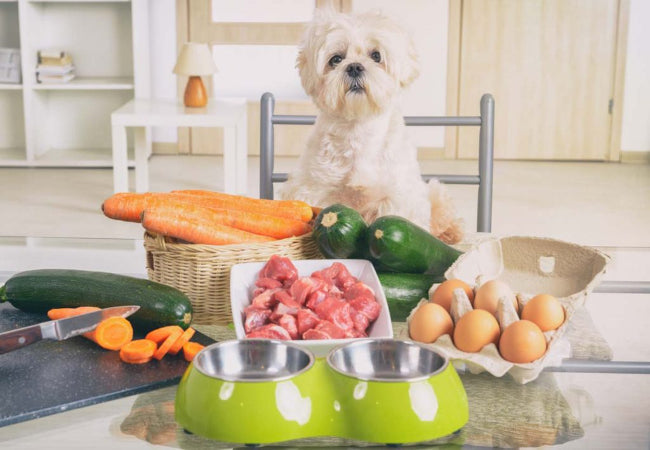Top 10 Natural Feeding Myths 2025: What Even Good Pet Owners Believe 🐶✨

In this article
Top 10 Natural Feeding Myths 2025: What Even Good Pet Owners Believe 🐶✨
By Dr. Duncan Houston BVSc
Natural feeding is growing fast—but with popularity comes misinformation. Many well-meaning dog owners fall into common traps that can lead to imbalanced diets, digestive issues, or wasted money.
I’m Dr. Duncan Houston, veterinarian and founder of Ask A Vet. Here are the top 10 natural feeding myths I hear in vet clinics (and on social media) — debunked with real science and practical advice.
Myth #1: “If It’s Natural, It’s Automatically Healthy”
Not all natural foods are good for dogs. Grapes, macadamia nuts, onions, and raw dough are all “natural”—but toxic. A natural diet still needs vet oversight.
Myth #2: “Dogs Need Variety in Every Meal”
Dogs do best with balance over time, not variety every day. Constant changes without gradual transition can cause diarrhea, food sensitivities, and stress.
Myth #3: “You Can Just Feed Meat and Veggies”
This is the most dangerous myth. Meat + veggies ≠ complete diet. Dogs need calcium, trace minerals, fat-soluble vitamins, omega-3s, and precise phosphorus ratios—especially growing pups.
Myth #4: “If My Dog’s Poop Looks Fine, The Diet Is Fine”
Poop is helpful—but not everything. Dogs can appear healthy while developing silent deficiencies in iodine, zinc, vitamin D, or essential fatty acids.
Myth #5: “Picky Dogs Just Need Tastier Food”
Often the issue isn’t flavor—it’s structure, over-snacking, or feeding anxiety. Fix the feeding routine before blaming the diet.
Myth #6: “Cooking Ruins All Nutrients”
Light cooking actually improves digestibility for many dogs. While some vitamin loss happens, it can be corrected with supplementation—no need to serve everything raw.
Myth #7: “Grain-Free Is Always Better”
Grain-free isn’t automatically superior. Whole grains like oats, rice, or quinoa can benefit digestion. Many “grain-free” diets are just high in starches like lentils or potatoes.
Myth #8: “I Don’t Need Supplements if I Feed Real Food”
Even the best real foods lack nutrients like vitamin D, E, or balanced omega-3s unless carefully calculated. A high-quality multivitamin, fish oil, or probiotic is often needed.
Myth #9: “Raw Bones Clean Teeth”
Raw bones may scrape tartar—but they also crack teeth, block intestines, or carry pathogens. Dental hygiene should come from brushing and vet-safe chews, not risk-based tools.
Myth #10: “Dogs Are Wolves and Should Eat Like Them”
Domesticated dogs are not wolves. They’ve evolved to digest starches and live longer lives. Feeding them like wild carnivores often ignores modern science and individual needs.
✅ Real Natural Feeding Should Be:
- Balanced over time—not improvised
- Rooted in science—not internet trends
- Flexible, affordable, and enriched—not restrictive or extreme
🔗 Tools from Ask A Vet
- Ask A Vet – Get your natural diet plan reviewed by a vet before trying new trends or risky recipes
📋 Summary Excerpt
Even the most loving pet owners fall for feeding myths. A vet explains the top 10 natural nutrition mistakes and how to safely give your dog a healthy, balanced, real-food diet.
❓ FAQs
-
Q: Can I feed raw or cooked—what’s better?
A: Both can work. Cooked is easier to balance and safer for beginners. Raw must be complete and handled carefully. -
Q: What’s the biggest mistake in natural feeding?
A: Thinking meat + veg = balanced. Missing calcium and micronutrients is the most common danger. -
Q: Are supplements mandatory?
A: In most home-prepared diets—yes. Even high-quality fresh food often needs vitamin/mineral support.






